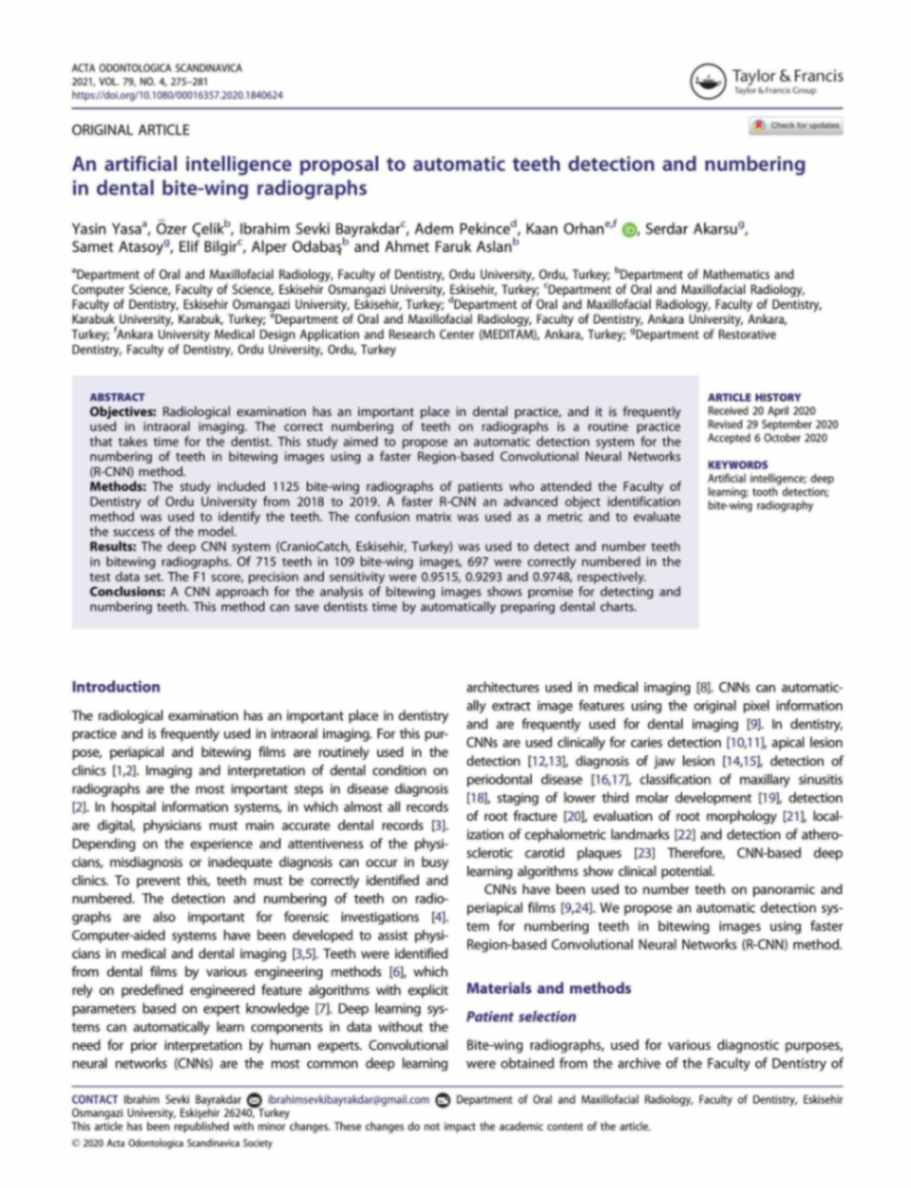Classification Of Temporomandibular Joint Osteoarthritis On Cone Beam Computed Tomography Images Using Artificial Intelligence System
1. Introduction
The study focuses on utilizing artificial intelligence (AI) for the classification of temporomandibular joint osteoarthritis (TMJOA) based on cone beam computed tomography (CBCT) images. The objective is to achieve early diagnosis of TMJOA using biomarkers and machine learning techniques.
2. Methodology
- Data Acquisition: Retrospective study using archived CBCT images from a NewTom 5G device. Images were converted to DICOM files and then to sagittal sectional frame images for analysis.
- Image Evaluation: 2000 sagittal images were evaluated for TMJ assessment, with 500 images each for healthy joints, flattening, erosion, and osteophytes.
3. Image Labeling and Classification
- Labeling Procedure: Free drawing approach (polygon method) used to label TMJ and external borders.
- Classification: Koyama et al. classification from 2007 was adapted into four classes: Normal, Flattening, Erosion, and Deformity.
- AI Model: YOLOv5 model with transfer learning applied for segmentation of TMJ and classification of osteoarthritis.
4. Results
- Diagnostic Performance: XGBoost and LightGBM models achieved high accuracy, AUC, and F1 scores for TMJOA detection.
- TMJOA Classification: AI model achieved high accuracy for TMJ segmentation, with slightly lower accuracy for TMJOA classification.
5. Discussion
The study demonstrates the feasibility of using AI and deep learning models for automatic detection of TMJOA from CBCT images. The results suggest the potential for accurate and efficient diagnosis of TMJOA using advanced technology.
6. Data Availability and Ethical Considerations
- Data Availability: Data available upon request from the corresponding author.
- Ethics: Study approved by the Inonu University Non-Invasive Clinical Research Ethics Committee, conducted in accordance with the Declaration of Helsinki.
- Informed Consent: Obtained from all patients included in the study.
7. Conclusion
The study highlights the promising role of AI in dentistry, particularly in the diagnosis of TMJOA using CBCT images. By leveraging machine learning models and advanced imaging techniques, early detection and classification of TMJOA can be achieved with high accuracy.
I Want to Write a Scientific Research Project
CranioCatch is a global leader in dental medical technology that improves oral care in the field of dentistry. With AI-supported clinical, educational, and labeling solutions, we provide significant improvements in the diagnosis and treatment of dental diseases using contemporary approaches in advanced machine learning technology.
CranioCatch serves thousands of patients with dental health issues worldwide every day with its innovative technologies. That’s why we eagerly look forward to meeting our valued dentists who wish to work in the field of 'Scientific Research in Dentistry'.



 Contact Us
Contact Us

